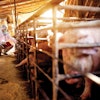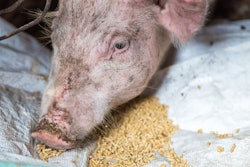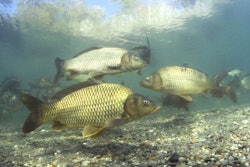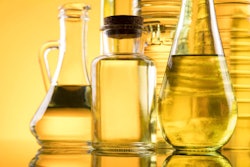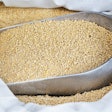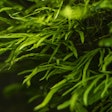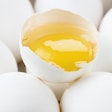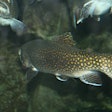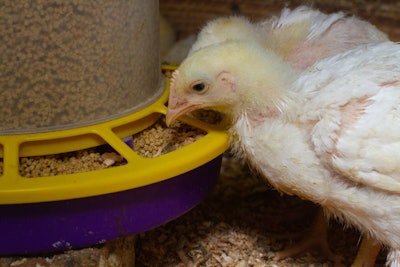
Find out which alternative energy sources can be used when replacements to corn and wheat are required.
Common cereals like corn and wheat are usually cheap enough to be used in most animal feeds. Now and then, however, there is the need to look at alternative sources of energy. This might be because these common cereals become temporarily too expensive, unavailable or both.
In other times, alternative sources of energy are priced so enticingly that it becomes imperative to consider them lest profit opportunity escapes in an industry chronically low in profitability. In all such cases, then, the question becomes how to use them and what problems to look for to avoid making things worse than they are now.
Below, we will discuss six alternative cereal sources, from the perspective of broiler nutrition, so that we can be more precise.
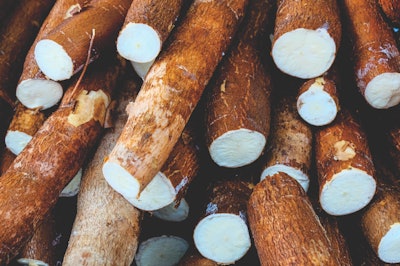 (Julio Ricco | iStockPhoto.com)
(Julio Ricco | iStockPhoto.com)-
Cassava meal
This ingredient is the processed product of the cassava tuber. The tuber has been peeled, chopped down, and let to sun-dry to allow the hydrogen cyanide in the roots to evaporate. We should look for sweet cassava varieties as they contain the least residual hydrogen cyanide and, if possible, we should test or receive a guaranteed analysis reflecting their suitability for animal feeding. Cassava arrives mostly as chips or pellets, which require grinding, and then they can be included in broiler feeds. This processed ingredient often contains 60-70% starch (needs to be on the label) and pretty much nothing else of real value. So, it is a major energy source similar to corn, but with less protein. With the necessary adjustments in nutrients, it can be included in broiler diets up to half of the cereal portion, which is roughly 25-30% in most common formulas. This always assumes the best quality cassava is used. Otherwise, the inclusion rate should be adjusted so that animals do not receive more hydrogen cyanide than they can detoxify easily. It is always best to pellet cassava-based diets to avoid issues with excessive dustiness, unless grinding is done coarsely.
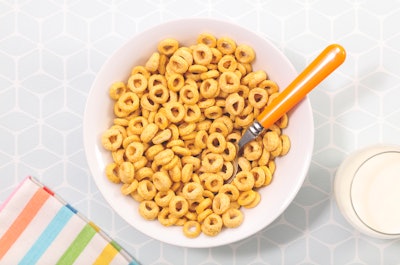 (M.studio | AdobeStock.com)
(M.studio | AdobeStock.com)-
Breakfast cereal fines
This is an unlikely ingredient to encounter, even in bibliography, unless one is located close to a factory that produces breakfast cereals for human consumption. As it happens, these industries sieve the final product before bagging it to avoid excessive fine particles turning off consumers. Thus, a good amount of fines can be collected daily – even up to a truckload, in some cases. As these are mostly a mixture of cooked cereals and sugar, their energy value is at least as high as that of corn, their taste is exceptional, and they are produced daily so they can be secured in a fairly fresh state. They contain about 20% sugar and perhaps colorful particles, both of which can cause some problems. Too much sugar in the gut can cause osmotic diarrhea, whereas animal feeds with green-red-blue specks in it will raise some eyebrows. With these issues in mind, breakfast cereal fines can be included up to 25% of the final diet, something that gives about 5% added sugar, which is considered safe enough.
 (5second | AdobeStock.com)
(5second | AdobeStock.com)-
Dried pasta waste
Pasta in its varied forms is consumed almost throughout the world, and pasta industries exist in most countries. These plants produce daily a respectable amount of waste, ranging from over- and under-cooked pasta, returned products (care is required here to avoid spoiled products entering the feed chain), and any batch of pasta that for some reason is considered inadequate for human consumption. As most pasta products are just cooked wheat flour, the waste product is mostly that, along with any other minor ingredient that can be used in specialty products. As expected, it contains very little if any lipids and as such it is quite resistant to rancidity. From pasta waste to a product that can be consumed by birds requires some processing, but the end product can be used rather freely, although most, again, do not exceed 50% of the cereal portion, or 25% of the total ration. Too much finely ground wheat flour can cause beaks to get sticky enough to make eating difficult for birds and thus, products containing pasta waste should be pelleted.
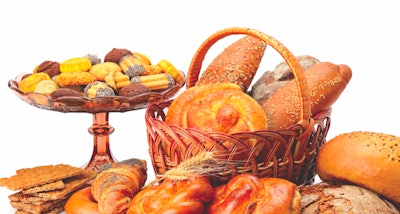 (Serghei Velusceac | AdobeStock.com)
(Serghei Velusceac | AdobeStock.com)-
Bakery byproduct
Bread, cookies and snack industries can produce distinct waste products, but all these waste streams are often bought and mixed together to produce a more uniform product, the bakery byproduct meal. This is quite available in the feed industry and its potential and problems are well known. The major issue is that it may contain too much fat (average of 10%) and/or salt (average of 0.5% sodium), which must be taken into account during product purchasing and feed formulation. A good quality, fresh bakery byproduct meal can be used without hesitation up to 10-15% in broiler feeds, being particularly favored in starter diets due to the high digestibility of the cooked ingredients. If the product contains less fat and salt, perhaps by the addition of pasta waste streams, then inclusion levels can be increased.
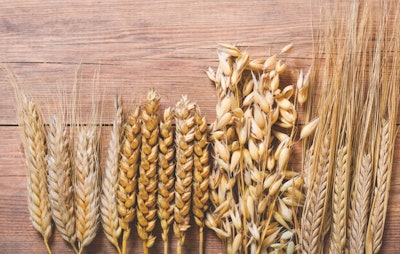 (Nitr | AdobeStock.com)
(Nitr | AdobeStock.com)-
Triticale
Now and then, farmers will be convinced to raise triticale, which is a hybrid between rye and wheat. It offers certain advantages as a crop and contains the average of problems found in its parent species. Thus, it contains non-starch polysaccharides that are of intermediate concentration and it can suffer from ergot contamination. Otherwise, and especially with newer varieties, it can be used like wheat although it is not recommended to combine wheat and triticale in the same formula. Perhaps some of the issues with non-starch polysaccharides can be addressed by the inclusion of an enzymatic cocktail, but this is not always successful. It is thus best used in conjunction with corn to supply no more than 50% of the cereal portion.
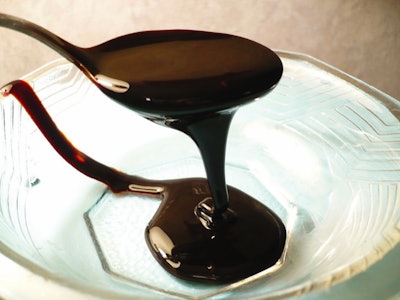 (Wikimedia Commons)
(Wikimedia Commons)-
Molasses
Another improbable ingredient for poultry, molasses is an energy rich, semi-viscous material that contains sucrose and fructose. It requires special equipment to incorporate into the feeds, and it can freeze during cold months, but it does help with pelleting and improves feed palatability. Most feed mills cannot add more than 6% molasses into feeds, for reasons pertaining to equipment, and this is the maximum that can be used in broiler feeds, too. In most cases, however, the actual inclusion rates are 2% to 4% because molasses contains excess potassium that can lead to increased dietary electrolyte balance. This leads to increased water intake with subsequent problems arising from wet litter. But, when potassium does not exceed 1% in the final formula, then such problems should not arise, and this is best considered by a qualified nutritionist.
In brief
The major issue with all these ingredients is not their energy content, but rather their quality. Once quality is assured, then feed professionals can use them without hesitation regarding adverse effects. The exact inclusion levels should be discussed carefully, and it is always best to start with a conservative approach to ensure animal performance and health is not compromised and the feed mill learns how to use the new ingredients. As always, an experienced nutritionist should be consulted to make the final decisions.
